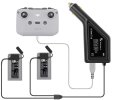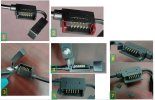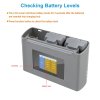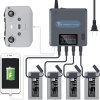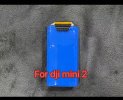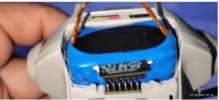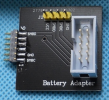herein2021
Well-Known Member
More battery info that may be useful. I measured the voltage between all the pins on the 6 pin connector of the Nano battery. I will include an image with my pinout labeling since I couldn't find a convention anywhere online.
I measured between all the pins using a almost brand new Nano battery at 3 different charge states. 100%, 15%, and 0% according to the Autel Sky App.
In order to probe the voltages you have to turn the battery on in the same way you would turn on the drone by holding the power button for about 3 seconds. Probing the terminals before turning the battery on gives 0.0V on all terminals. Once you power on the battery voltages appear across some of the pins.
In the attached table the first pin number was always connected to the positive terminal on the voltmeter.
I would love to get a hold of a dead or damaged nano battery to take it apart and see what's inside. Or maybe someone that has a dead battery could open it up and post some detailed pictures of the chips and cells inside?
I'm also curious if the drone itself has a charging circuit or does it just pass the USB C charger output directly to the battery and let the battery handle the charge control.
Cheers
You have way more free time than I do....I just buy more batteries if I need more flight time and I wait until the lights go out to take the battery off of the charger. But I approach all of my camera gear from a commercial standpoint vs a hobbyist standpoint and in the commercial world time is money. I take the time to learn the nuances of my equipment but couldn't care less about their insides.



